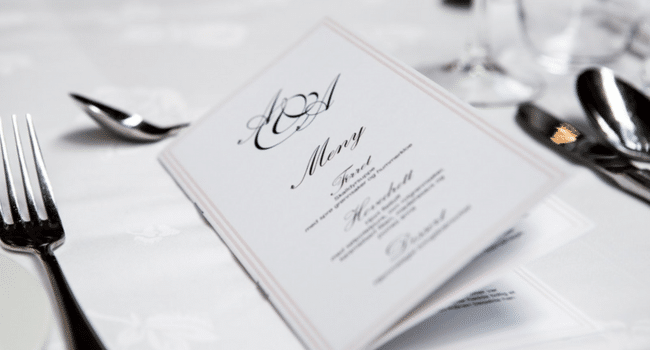Table of Contents
Pricing is always a crucial aspect of any business, and for restaurants, it rings even truer. For a restaurant, the right menu pricing can make or break the game, making it significant in determining your business’s success. However, pricing your menu is not as straightforward as it seems.
Apart from accounting for your expenses, you also have to be smart about how you set the prices, taking into account the customer’s perception, the market trends, and more. If you are wondering how to navigate these complexities of menu pricing for your restaurant, we have got you covered! In this blog, we will present to you some effective tips from Bloc, that will help you price your restaurant menu efficiently.
Know Your Customer’s Perception
One of the foremost things to consider while pricing your menu is to understand customers’ perceptions towards pricing. A high-priced menu may not always be a deterrence to customers provided they receive significant value for their money. Conversely, a low-priced menu may raise doubts or questions about the quality of food or service.
Therefore, it’s crucial to gauge customers’ perceptions and design your menu pricing accordingly. To do this, you can conduct market surveys, research competitors’ pricing strategies, and analyze customer reviews. Doing this will enable you to determine the right price point that can balance customer’s expectations and purchase behavior.
Take into Account The Cost of Goods Sold
Owning a restaurant demands a keen understanding of your cost of goods sold (COGS) to strategically set menu prices. The COGS is a precise gauge of the direct expenses involved in crafting the dishes you offer, encompassing ingredients, packaging, and direct labor. Mastery of your COGS empowers you to craft menu prices that not only recoup your expenses but also yield a profit. Calculating your optimal menu price involves multiplying the overall food cost by a factor, typically ranging from 2 to 3.
This simple equation is the key to pinpointing the ideal pricing sweet spot, ensuring both profitability and long-term viability. Ultimately, a well-balanced pricing strategy aligns your culinary craftsmanship with financial success, providing a solid foundation for your restaurant’s prosperity. Brick & Bourbon a restaurant in Minneapolis uses this method
Leverage- Strategic Menu Engineering
Restaurant owners can leverage strategic menu engineering to design their food menu to maximize profitability. Menu engineering is about strategically placing menu items with higher profit margins and those that are popular to boost sales. Using this approach, you can set the price of items based not only on their cost but also on their potential contribution to your restaurant’s overall revenue. For instance, items that have a higher profit margin can be priced slightly higher, while the popular ones can be priced slightly lower to entice customers.
Study Market Trends
Market trends like changes in demand, competition, and consumer behavior can significantly impact your restaurant menu pricing. Therefore, it’s critical to stay on track with market trends to rethink and adjust your menu prices to remain competitive. For example, if you notice a significant shift in customer’s preferences toward healthy eating, you can consider introducing low-fat options or plant-based meals on your menu. Also, monitoring competition prices and offers can help you adjust your menu prices to remain in the game.
Be Transparent
Establishing menu prices requires absolute transparency, a pivotal element in fostering customer trust. It will help if you present the prices clearly and ensure there are no hidden or unexpected costs at checkout. An equally crucial facet is offering precise descriptions of menu items. This not only aids in transparency but also serves to accentuate the unique and high-quality nature of your dishes, substantiating the price points.
By doing so, you not only justify the cost but also elevate the overall customer experience. The strategic alignment of transparency, accurate descriptions, and emphasis on exceptional offerings not only ensures customer satisfaction but cultivates a positive perception of your establishment, fostering loyalty and encouraging repeat business. In the competitive landscape of the culinary world, transparent and well-justified pricing becomes a cornerstone for sustained success.
Creating a Positive Customer Experience
Picture this: you walk into a restaurant, ready to indulge in some delicious eats. The menu looks promising, but then you see the prices. Your eyes bulge out of your head and you start to feel like you’ve just stepped into a fine dining establishment. According to CJ Digital, a restaurant marketing agency, When it comes to creating a positive customer experience, aligning pricing with value is key. Customers want to feel like they’re getting bang for their buck, and they’re willing to pay for it if they feel like they’re getting their money’s worth. And if you want to take your customer satisfaction to the next level, throw in a complimentary dessert or drink. Trust me, it’ll make their day.
Case Studies
let’s chat about case studies – specifically, how we can learn from some industry examples. You know what they say, “imitation is the sincerest form of flattery.” So, why not take a peek at the successful menu pricing strategies that other restaurants are using? Don’t worry, we won’t be copying our competition completely – we’re smarter than that. But let’s see how we can adapt and improve upon what’s already working out there. After all, if it ain’t broke, don’t fix it, am I right?
Pricing your restaurant menu can be a tricky business, given the many factors you need to consider. However, with the right approach and tools, you can set the right price point that balances customer’s expectations and sustainability. Keeping in mind the above tips can help you arrive at the sweet spot that guarantees profitability while ensuring a satisfied customer experience. Go ahead, and use these tips to revamp your restaurant menu pricing, and we guarantee it will pay off!
Read More on KulFiy
